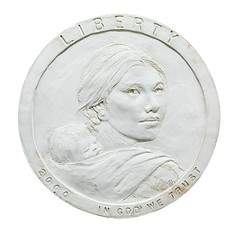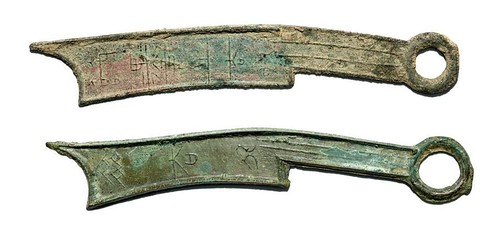
PREV ARTICLE
NEXT ARTICLE
FULL ISSUE
FORBES REVIEWS SMITHSONIAN MONEY EXHIBITSForbes magazine published a nice review of the Value of Money and Really BIG Money exhibits from the National Numismatic Collection at the Smithsonian. Here's an excerpt, but see the complete article online for more. And check out the exhibit when you're in town! -Editor
The Bank of South Sudan did not have to print banknotes, let alone pay the South African Mint to strike coins showing subjects of national pride ranging from giraffes to oil derricks. Neighboring Kenya already had years of experience running payments through a mobile banking system called M-Pesa, and the blockchain was starting to host a range of cryptocurrencies beyond bitcoin. The decision to follow tradition was political, equivalent to the choice Eritrea made in 1998, shortly after seceding from Ethiopia. Even more than a flag or anthem, a state currency broadcasts national identity. South Sudanese and Eritrean banknotes are currently on view at the Smithsonian National Museum of American History alongside dozens of other coins and currencies from around the world and throughout history, in a permanent exhibition aptly called The Value of Money. Built on solid numismatic foundations, and expertly curated by Ellen Feingold, the exhibit only becomes more timely with each slip of the economy and freefall of cryptocurrency. Even more valuable is a new addendum opened this year for children coming of age at a time when they might never need to pocket a pound or a penny. Beneath their impressive surface luster, both exhibitions – and their comprehensive online complements – implicitly ask what money does when it isn't merely quantifying a financial transaction. Some of the earliest money was made in China, where coins were cast in the shape of tools such as spades and knives. Inherently worthless, these token objects recollected real implements with actual utility value, items that had traditionally been bartered for livestock and land. The change to a make-believe version in the 7th century BCE increased commerce by easing exchange – i.e., friction was reduced by lightning the load – but these coins reminded people at every trade that money was merely symbolic. Well represented in the Smithsonian collection, knife and spade money arguably countered the abstraction of wealth and the concomitant distortion of values. In the Near East, money evolved independently, taking an entirely different trajectory. Around the same time that China was casting miniature tools in bronze, the kingdom of Lydia (located in modern Turkey) started striking coins in a natural alloy of silver and gold. Previously most transactions in the region had involved the exchange of bullion, which required weighing and assaying with every exchange. With the stater and its fractions – soon struck in pure gold or silver instead of alloyed electrum – Lydia standardized monetary units while also certifying authenticity. Lydia was defeated by the Achaemenid Empire in 547 BCE. Learning metallurgy and minting from their new subjects, the Achaemenid kings started to issue their own coinage in precious metals with one signal difference: In contrast to the lions and bulls gracing Lydian staters, the new sigloi portrayed the monarch, depicting him as a kneeling archer with drawn bow. Wherever the Achaemenid currency spread, it carried an implicit threat of colonization.
Ever since, most coinage has been struck with subtexts ranging from political propaganda to visions of the future. The Value of Money includes an Athenian tetradrachm, which became the de facto currency throughout most of ancient Greece in the 4th century BCE, radiating the prestige of the city and spreading the glory of its patron deity with a spectacular portrait of a helmeted Athena. The exhibition also includes a Colonial American cent from 1786 prominently displaying the Latin motto E Pluribus Unum (
To read the complete article, see:
THE BOOK BAZARREWayne Homren, Editor The Numismatic Bibliomania Society is a non-profit organization promoting numismatic literature. See our web site at coinbooks.org. To submit items for publication in The E-Sylum, write to the Editor at this address: whomren@gmail.com To subscribe go to: https://my.binhost.com/lists/listinfo/esylum All Rights Reserved. NBS Home Page Contact the NBS webmaster 
|

